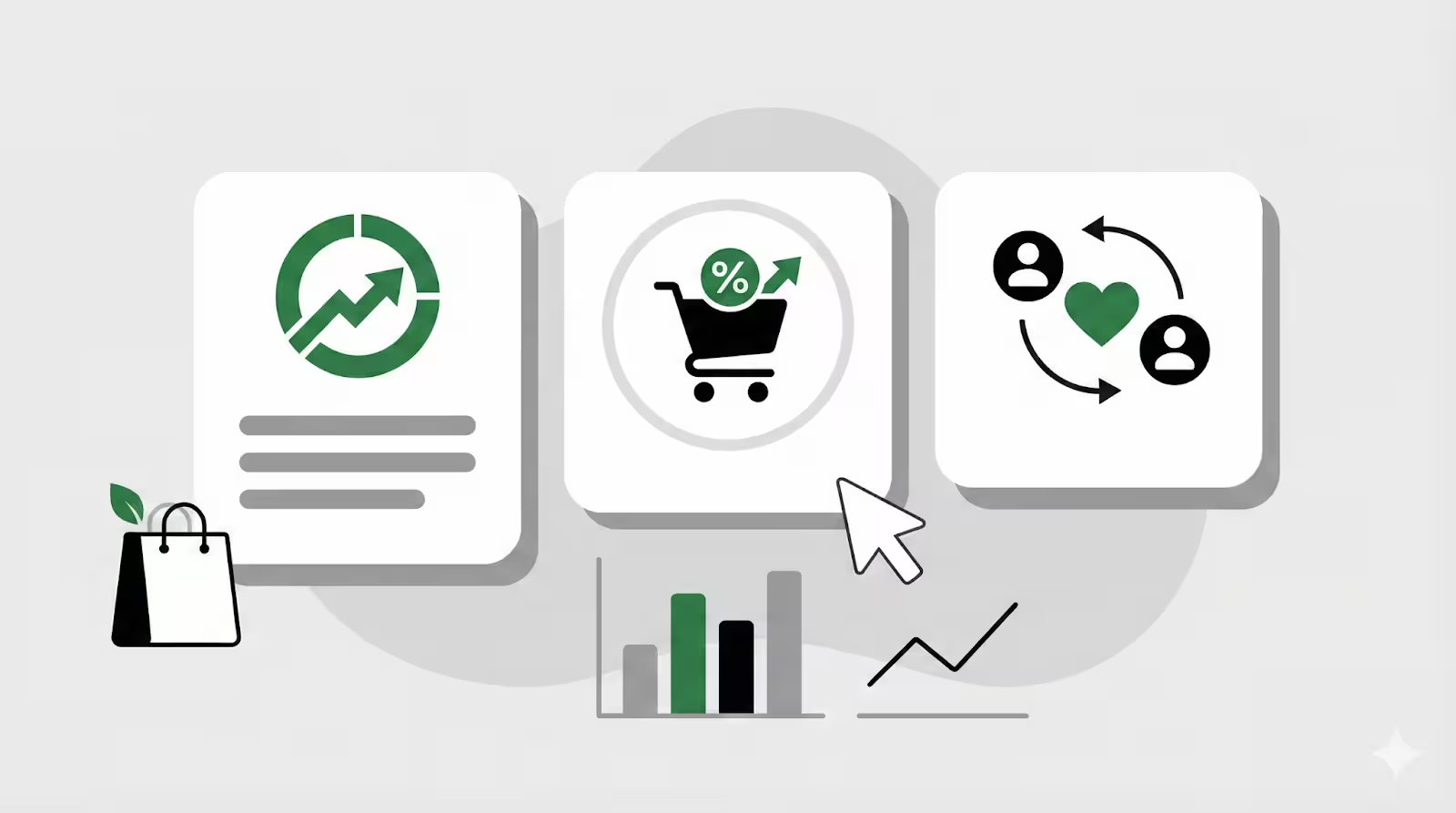For many online stores, Facebook advertising is the go-to eCommerce marketing platform. With features like advanced targeting and defined goals, Facebook ads have made it easier for stores to recover abandoned carts, bring back repeat customers, and attract new audiences. However, Facebook has strict policies that prohibit certain businesses from advertising their products. This means that these stores have to find other Shopify marketing strategies to replace this common eCommerce growth tactic.
Let’s start by looking into what products you can’t advertise on Facebook. And then dive into the different Shopify marketing strategies that you can set up instead, to avoid losing valuable customer attention.
What Can’t You Advertise on Facebook?
With 1.62 billion users on the platform, Facebook has an extensive set of rules to safeguard online experiences. To give users a positive experience on their platform, the social giant has set up restrictions on businesses and individuals selling and creating "negative or controversial content". This is why eCommerce stores that sell adult products, vape accessories, weapons, and unsafe supplements can't advertise their products on Facebook.
This listicle by Advertisemint has noted down the different types of businesses that can’t advertise on Facebook.
If you’re one of these stores, how can you make up for losing out on valuable, inorganic traffic from Facebook users? We’ve got some of the best Shopify marketing strategies to help you grow eCommerce sales despite not being able to use Facebook ads.
Alternative Shopify Marketing Strategies to Facebook Advertising
1. Convert visitors with web push notifications
Out of the many shoppers that visit your store, a majority of them are likely to be one-time visitors. Without any targeting measures set in place to capture these visitors, you’re losing out on potential customers for your store. Capture these visitors with a web push notification prompt and send crisp messages about your latest products, flash sales, and even collection based promotions.
Headphone Zone has been using web push notifications as one of its main marketing channels. It has seen a 126x ROI from PushOwl and click rates that are 3 times higher than email.
As one of the most trusted Shopify marketing strategies, web push notifications are a great alternative to not being able to advertise on Facebook. Stores that sell vaping accessories, like Planet of the Vapes and EightCig use web push notifications as a way to turn visitors into customers and even bring back repeat purchases.

Pro tip: Marketing your store with web push notifications is easy, especially with PushOwl. This complete guide to using web push notifications on your Shopify store is all you need to start seeing results with this marketing channel.
2. Bring relevant traffic with search ads
It’s no surprise that Google’s ad network is massive enough that it captures a majority of the world’s population that is online. According to Google Benchmarks and Insights, Google display campaigns reach 80% of global internet users. This means that despite losing out on audiences on Facebook, you still have a chance to capture them with search ads using Google AdWords.
Pro tip: Google’s set of tools— from the Analytics dashboard to the AdWords page— makes it easy to set up search ads for different goals. From targeting past visitors to converting cart abandoners to even bringing a new audience to your store, Google’s ads are powerful and highly flexible. Shopify has a guide on using Analytics with the platform as well as a comprehensive article about the different ad campaigns you can run.
But, Google also has a list of prohibited or restricted content when advertising. Learn more about Google Ads policies from their helpdesk.
3. Create organic content on social media
One of the most trusted eCommerce marketing practices is creating your own content on social media platforms. From photos of your products and videos of how customers use it to testimonials and fun, relatable quotes— organic content can foster deep bonds and make your brand more credible and trustworthy.
For instance, Innocent Drinks post fun images of their juices along with a witty tone that compels their followers to share it with friends. Their social media strategy is so well-loved that blog posts are praising how the brand is positioned online.
The scope of social media is also vast. Instagram, for instance, allows you to add up to 30 hashtags, ensuring your posts reach the right audiences without having to run ads. Both Facebook and Instagram have the “Shop” feature to let customers pick up the product that they see in pictures without hassle.
Pro tip: When you start creating content about your products, do some research on what kinds of content other brands in your industry are creating. Analyze which content pieces are seeing the best results and see how you can put your spin to it. One of the most popular content types is bite-sized videos about the product or how to use it.
4. Build a community on Reddit or Pinterest
Community spaces like Reddit and Pinterest are powerful in engaging with the right audience organically. On Reddit, store owners can suggest their products on different shopping subreddits, create a subreddit related to their store that their shoppers can enjoy or just engage with different users on related subreddits to bring them to your store.
Pinterest is also a well-known marketing channel for Shopify stores. According to AdEspresso, 73% of pinners have purchased something after seeing it on Pinterest. While the social media platform is highly compatible with stores in the fashion and decorative industries, other industries have also found a place here. Store owners can use Pinterest to share product images, infographics on how they were made or how to use them and even run ads on the platform to promote them.
By setting up these communities across different kinds of channels, merchants have the opportunity to leverage organic Shopify marketing strategies that ensure that they are reaching a new set of audience that was never available to them.
Pro tip: Read this blog on how one small eCommerce store found success by promoting their cigars on Reddit. If you want to focus your efforts on Pinterest, you can learn more from this blog. You can also easily create graphics and infographics with online design tools like Venngage.
5. Re-engage customers with SMS marketing
With Facebook ads, it’s much easier to target one-time customers and aim to bring them back for a repeat purchase. But, stores that can’t advertise on Facebook have to set up alternative Shopify marketing strategies to retarget this segment of shoppers. For such instances, SMS marketing is a great way to achieve your retargeting goals.
SMS marketing has proven success. According to The Daily Egg, SMS messages have a whopping 98% open rate. The response rate with SMS is 209% higher than email and even Facebook! And getting started with SMS marketing is simple. Since you already have the details of your customers, you just need to set up your subscriber list and begin sending promotions to these customers.

Pro tip: Shopify has many apps for SMS marketing that you can choose from. We recommend SMSBump as their powerful dashboard has features like shopper segmentation and upsell. Read SMSBump’s guide to running a successful text marketing campaign.
6. Foster loyalty with a rewards program
Your returning customers is where the big bucks lie! That's why more experts are focusing on Shopify marketing strategies that successfully bring back your customers. Enter loyalty programs.
Give your customers rewards for different activities that they do on your store— set up a customer account, make their first purchase, review a product. With these points, let your customers redeem free shipping, discounts, and even free products.
Loyalty programs aren’t just a great eCommerce marketing strategy for stores to set up. Even customers love it! Annex Cloud found that 54% of consumers say that they would consider doing more business with a company for loyalty rewards. Evy’s Tree is one such Shopify store that has set up a loyalty program and created a strong community among its shoppers. As a result, they've generated 83X ROI and lifted return customers by 58%.

Pro tip: Smile.io and LoyaltyLion are two of our favorite Shopify apps to create a loyalty program on your store. Once you’ve set up your loyalty program, pick up Shopify’s thorough article with top tips about setting up one that shows high conversions.
7. Get your existing customers to refer your store with a referral program
Nielsen found that 77% of consumers are more likely to buy a new product when learning about it from friends or family. Referral programs are one of the oldest marketing strategies. However, since it’s done by word-of-mouth and among people with close relations, they are still highly effective.
With a referral program, you don’t even have to spend on running ads to target a specific audience. Your existing customer base will bring in the right audience for your store. Studies suggest that companies with a referral program are 3x more likely to achieve their revenue goals.
All you need to do is nudge your customers to refer your products to their family and friends. In return, offer them redeemable points, discounts or even free products. But make sure you’re adding value to them in some way!
Pro tip: Referral programs don’t have to be complicated. Smile.io's helpdesk on setting up a referral program is all you need to get started.
8. Work with affiliates who have the ideal audience
Popularized by Amazon, affiliate programs have now become an excellent way for advertisers to sell faster and for affiliates to cash in their influence quickly. Here’s how it works. Store owners partner with influencers who have a target audience that is likely to shop from the store. These influencers will promote the product and provide affiliate links that, when used by their audience, can earn these influencers a commission from the sale(s).
According to Business Insider, affiliate programs generate 15%–30% of all sales for advertisers. However, successful affiliate programs come from picking the ambassadors who have the right audience— those who are likely to purchase from you. Before you start reaching out to influencers, do your research to find the influencers who are most suited for your store.
Pro tip: Setting up an affiliate program is time-consuming but worth the effort. Shopify has the complete guide to affiliate marketing.
Now, if you thought not being able to run Facebook ads was going to kill your business, think again.
These Shopify marketing strategies will help you boost your sales without even having to bother about not running Facebook ads. If you’re a store that sells items like tobacco, adult products, weapons, unsafe supplements, and more, fret not! Just pick up an alternative Shopify marketing strategy and maximize its potential to easily boost your revenue.





